Coastal razor clam summer assessments completed and show a record number of clams on most beaches with digging beginning as soon as mid-September Leave a reply
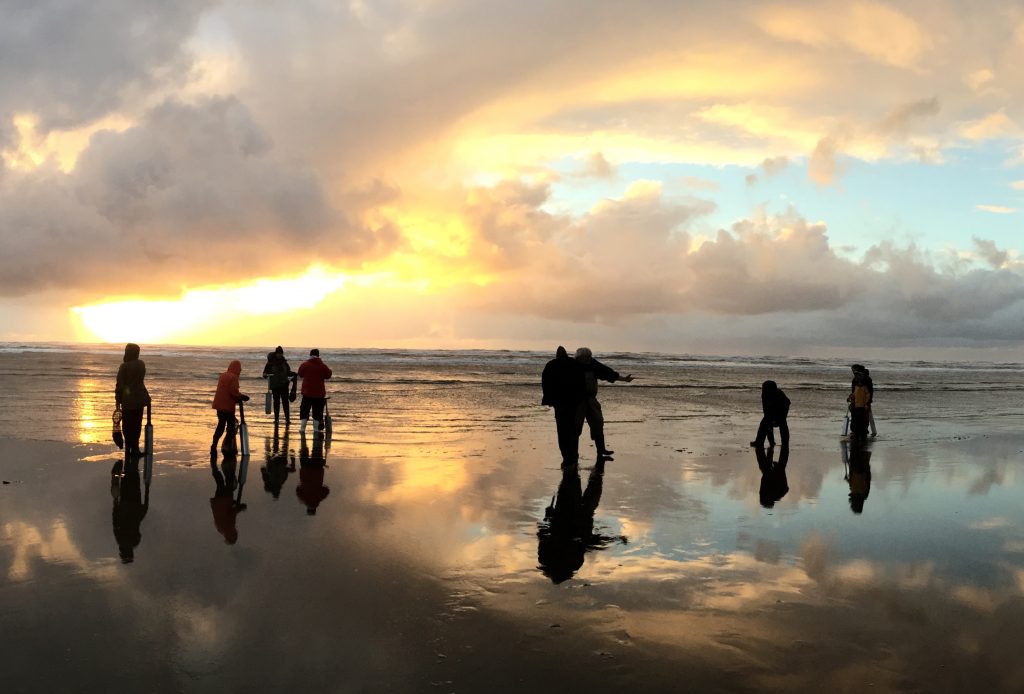
By Mark Yuasa
Coastal razor clam enthusiasts will dig this uplifting news!
The Washington Department of Fish and Wildlife (WDFW) just wrapped up their summer assessments, which revealed a record number of clams on some beaches, and are deciding on what could be a very liberal recreational digging season beginning in mid-September.
“Our summer assessments show razor clam populations are looking really good on all beaches (except for Kalaloch),” said Dan Ayres, the head WDFW coastal shellfish manager. “There are a lot of digging days ahead of us and probably more days than we can offer during the entire season (which runs clear into May of 2022).”
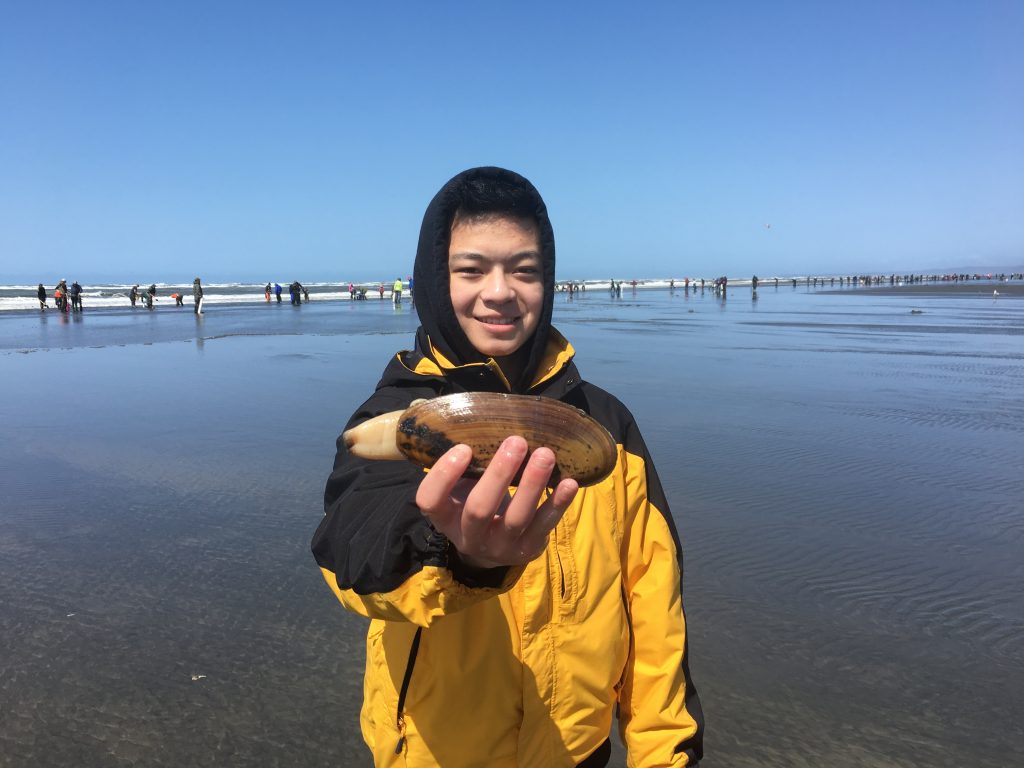
Long Beach has 21.6-million recruit-size razor clams and a total allowable catch (TAC) of 8.6-million for the 2021-2022 season, which is slightly down from 24.8 million and 9.9-million respectively last season.
The historical average over the past 25 years is 7.9-million recruits at Long Beach, and outside of the 2020-2021 season there hasn’t been anything close to 21-milllion.
“It will be very hard for us to even get close to harvesting that many razor clams at Long Beach this coming season, but we’ll try to add as many days of digging as we can,” Ayres said. “At places like Twin Harbors and Copalis we’ve also got really good news where both are seeing a record number of recruit “harvestable” size clams. Again, we’ve got a lot of digging days ahead of us at both of those beaches too.”
At Twin Harbors just south of Westport, assessments showed 8.5-million recruit-size clams (5.2-million last season) with a TAC of 3.4-million compared to 1.8-million last season. The previous record occurred in 2014-2015 season with 6.6-million recruit size clams.
At Copalis, the recruit-size clam total is 16.5-million (11.8-million last season) with a TAC of 6.6-million (recreational harvesters are allowed a share of 3.3-million) up from 4.7-million in 2020-2021.
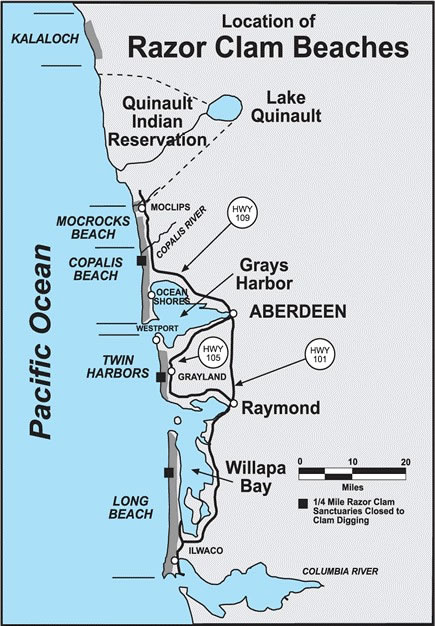
At Mocrocks, the population isn’t a record number of recruit-size clams at 9.7-milllion down from 11.6-million last season, but still a decent population. The TAC of 3.9-million (recreational harvesters are allowed a share of 2.0-million) is down from 4.6-million last season but up from 3.3-million during 2019-2020.
“We’ve never harvested that many clams at Mocrocks before, and the closest we’ve come is around 1.0-million,” Ayres said. “The amazing story at Mocrocks is the pre-recruit of little clams (those under 3 inches) which is 48.2-million and is a sign of a healthy ocean. A lot of these little guys averaging a little bigger you’re your fingernail won’t likely pull through, but we could end up with a fairly large number of clams, if they survive. I’ll be curious to see what happens next year.”
According to Ayres, the northern-most beach is Kalaloch where the recruit-size number of razor clams is 800,000, which equates to 203,000 in the TAC.
WDFW has already decided that digging at Kalaloch will remain closed during the 2021-2022 season. While there are 102,000 in the TAC, biologists saw very few clams that anybody would want to take home.
The next step in the season process is coming up with preliminary digging dates that are shared between recreational diggers and tribal- co-managers. WDFW has a plan drafted with some dates in mind that will begin in the middle of next month.
“We’re looking at a mid-September start time, and those first low tides will occur in the very early morning hours when it is still dark outside, and there’s generally not a lot of daylight low tides this fall,” Ayres said. “You don’t have to be a brain surgeon to decipher roughly when we’ll start just by looking at the tide charts.”

“We’ll certainly have more low tides during the first weeks of October and November and all those digs will occur at night,” Ayres said. “Many also were asking about the holiday periods, and there are no tides that coincide with Thanksgiving (Nov. 25), but we’ve got some ideal periods the weekend before.”
Just as well there are no low tides that happen on Christmas Day, but digging could be offered between Dec. 16-23 when low tides look optimal. There is also a wonderful low tide that will occur at 4:42 p.m. on New Year’s Eve as well as on Dec. 30 and Jan.1.
“The New Year’s Eve dig will allow revelers time to dig their clams before the evening festivities,” Ayres said. “Many people also like to stay on the beach after they dig their clams to light off fireworks.”
NOTE: These dates below ARE NOT set yet by WDFW, but will provide some insight on likely time periods of beaches opening. A news release from WDFW will likely be made sometime late next week or the following week.
Low tides: Sept. 16, minus-0.1 feet at 3:28 a.m.; Sept. 17, -0.4 at 4:30 a.m.; Sept. 18, -0.5 at 5:22 a.m.; Sept. 19, -0.6 at 6:06 a.m.; Sept. 20, -0.5 at 6:45 a.m.; Sept. 21, -0.2 at 7:21 a.m.; Oct. 5, -0.1 at 6:12 a.m.; Oct. 6, -0.3 at 7:20 p.m.; Oct. 7, -0.8 at 8:04 p.m.; Oct. 8, -1.1 at 8:49 p.m.; Oct. 9, -1.1 at 9:38 p.m.; Oct. 10, -0.8 at 10.32 p.m.; Oct. 11, -0.5 at 11:32 p.m.; Oct. 21, -0.2 at 7:57 p.m.; Oct. 22, -0.2 at 8:32 p.m.; Oct. 23, 0.0 at 9:06 p.m.
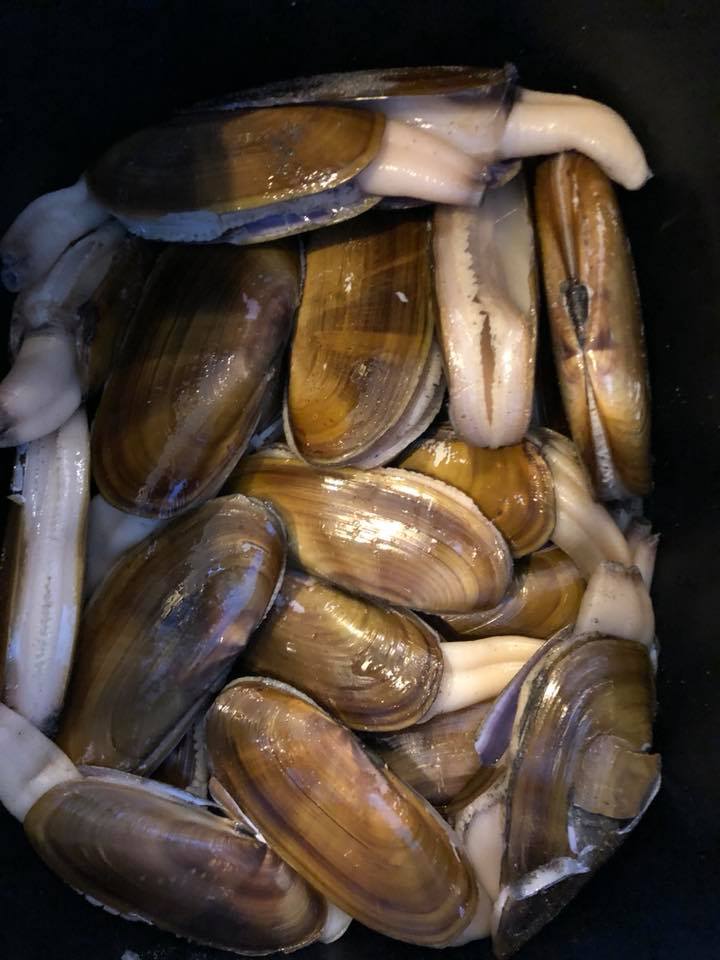
Nov. 3, -04 at 6:16 p.m.; Nov. 4, -1.1 at 7:01 p.m.; Nov. 5, -1.6 at 7:46 p.m.; Nov. 6, -1.7 at 8:33 p.m.; Nov. 7, -1.6 at 8:23 p.m.; Nov. 8, -1.2 at 9:16 p.m.; Nov. 9, -0.5 at 10:13 p.m.; Nov. 10, 0.0 at 11:16 p.m.; Nov. 16, 0.5 at 4:50 p.m.; Nov. 17, 0.1 at 5:28 p.m.; Nov. 18, -0.2 at 6:03 p.m.; Nov. 19, -0.4 at 6:36 p.m.; Nov. 20, -0.4 at 7:10 p.m.; Nov. 21, -0.2 at 7:44 p.m.; Nov. 22, 0.0 at 8:20 p.m.; Dec. 1, 0.1 at 4:09 p.m.; Dec. 2, -0.8 at 4:58 p.m.; Dec. 3, -1.5 at 5:45 p.m.; Dec. 4, -1.9 at 6:32 p.m.; Dec. 5, -2.0 at 7:20 p.m.; Dec. 6, -1.7 at 8:09 p.m.; Dec. 7, -1.3 at 8:59 p.m.; Dec. 8, -0.6 at 9:51 p.m.; Dec. 9, 0.1 at 10:45 p.m.; Dec. 16, 0.1 at 5:07 p.m.; Dec. 17, -0.2 at 5:43 p.m.; Dec. 18, -0.3 at 6:18 p.m.; Dec. 19, -0.4 at 6:52 p.m.; Dec. 20, -0.4 at 7:27 p.m.; Dec. 21, -0.3 at 8:02 p.m.; Dec. 22, -0.1 at 8:38 p.m.; Dec. 23, 0.2 at 9:16 p.m.; Dec. 29, 0.9 at 2:53 p.m.; Dec. 30, -0.1 at 3:49 p.m.; Dec. 30 -0.1 at 3:49 p.m.; Dec. 31, -0.9 at 4:42 p.m.; Jan. 1, -1.5 at 5:32 p.m.; Jan. 2, -1.8 at 6:21 p.m.; Jan. 3, -1.9 at 7:08 p.m.; Jan. 4, -1.6 at 7:54 p.m.; Jan. 5, -1.1 at 8:40 p.m.; and Jan. 6, -0.5 at 9:24 p.m.
Marine toxin updates
Despite an enormous amount of digging days during the 2020-2021 season, much of them didn’t happen due to an outbreak of a marine toxin known as domoic acid – a natural toxin produced by certain types of marine algae – which can be harmful or even fatal if consumed in enough quantities.
“For the moment, marine toxin levels look good and mostly in the 1 to 2 parts per million (ppm),” Ayres said. “I heard from Oregon that their toxin levels are down and their razor clam assessments are also strong at Clatsop beaches.”
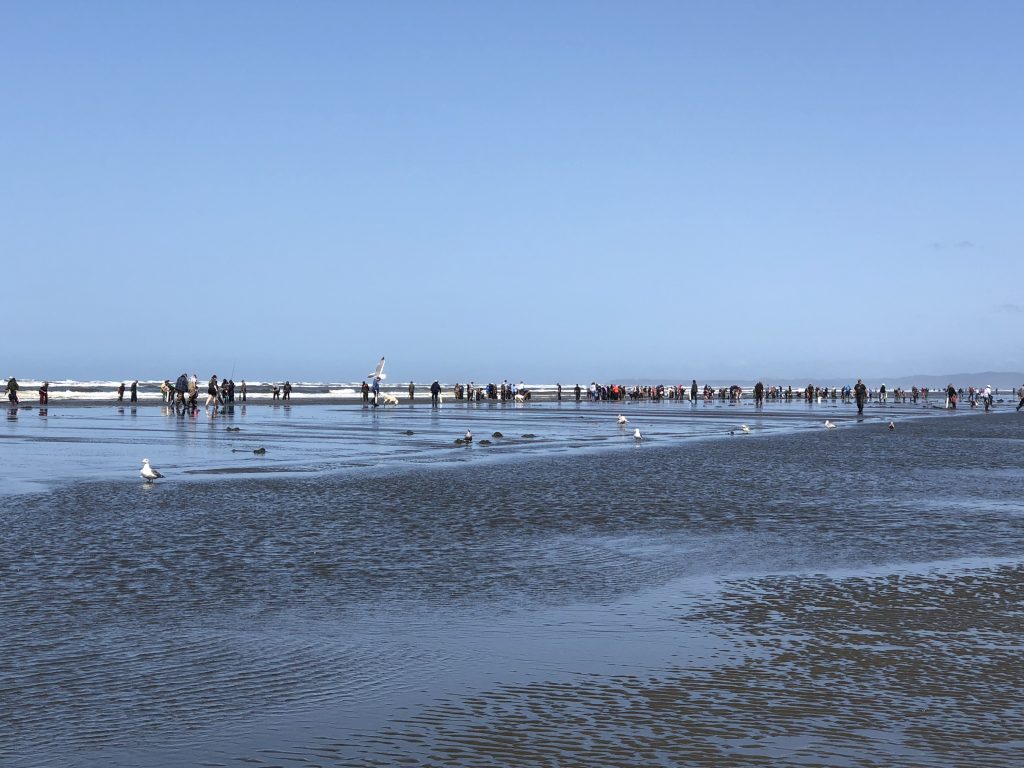
The Department of Health Labs get test samples of razor clam from WDFW regularly, and the action level is anything above 20 ppm.
“We did get a little spook of a rise of marine toxins at Copalis (earlier this month), but it dropped right back down,” Ayres said. “We know we aren’t out of the woods until we get a big fall storm, and I don’t expect that to happen anytime soon.”
Ayres says we are heading into a “ESNO” climate pattern – El Niño-Southern Oscillation – which is a recurring climate pattern involving changes in the temperature of waters in the central and eastern tropical Pacific Ocean. It is associated with colder water and air temperatures and increased rainfall during the autumn and winter period.
Furthermore, despite the hot inland weather, temperatures off the coast are quite cool and water salinity remains good.
Digging during the 2020-2021 season saw a coast-wide closure from the end of October through mid-May when just Mocrocks reopened for six days of digging on May 15, 17, 24, 26, 28 and 30.
Since 1991, when the toxin was first detected on the Pacific Coast, outbreaks of domoic acid have prompted the cancellation of three entire razor-clam seasons in Washington — the last one in 2002-03. Twin Harbors Beach never opened in 2015-2016 as marine toxin levels never dipped below the action level. The entire coast was also closed in late May of 2015 when domoic acid spiked well above the cut-off level.
Razor clam digging is a huge money maker generating $25- to $35-million for small coastal communities who rely on these opportunities during the lean tourist times in autumn, winter and spring to help boost their economy.
When dates are announced they will still require final approval dependent on weekly marine toxin testing. The green light is usually announced one to two weeks prior to each series of digs.
Digging could also be contingent upon continued guidance by public health officials monitoring COVID-19 in coastal communities. For more on razor clams, go to http://wdfw.wa.gov/fishing/shellfish/razorclams/.

